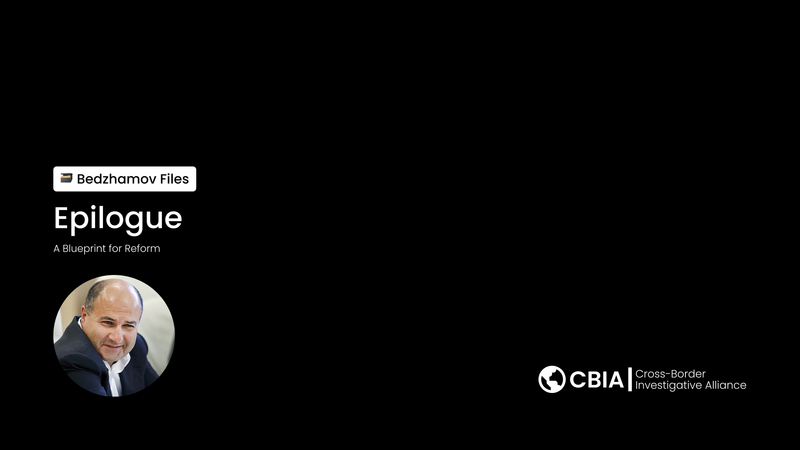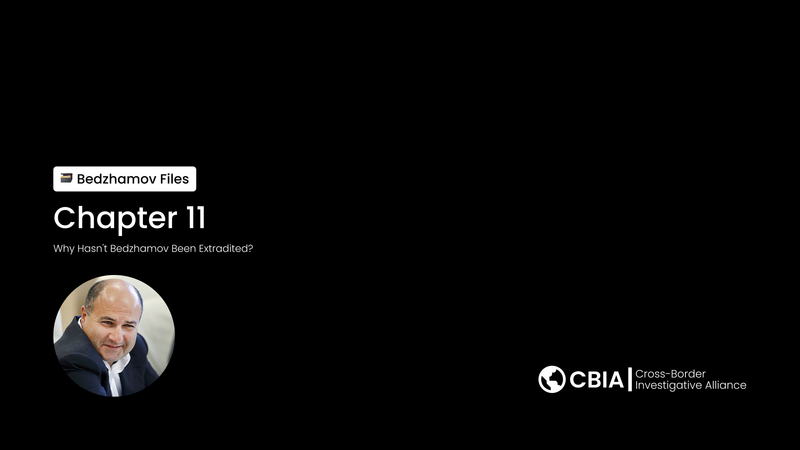Chapter 4: The Auditors' Complicity

While the elaborate network of shell companies provided the infrastructure for Bedzhamov and Markus's fraud, another crucial element allowed their scheme to continue undetected for years: the systemic failure of financial gatekeepers. Chief among these were the auditors tasked with verifying Vneshprombank's financial statements—professionals who should have served as the first line of defense against banking fraud.
Unlike the previous chapter's focus on the offshore labyrinth created to move stolen funds, this chapter examines how the siblings maintained the appearance of legitimacy at the source. The fraud's success depended not only on creating exit routes for the money but also on ensuring that the bank's books appeared sound to regulators and depositors alike.
Vneshprombank, like all Russian banks, was subject to mandatory annual audits. These audits, intended to provide independent verification of financial statements, should have detected the massive discrepancies between the bank's reported assets and its actual financial position. Yet year after year, auditors certified financial statements that concealed a growing hole in the bank's balance sheet.
According to court documents and investigative reports, the siblings employed multiple strategies to circumvent proper audit scrutiny. These ranged from sophisticated accounting manipulations to more direct forms of influence over the audit process.
One former employee of the bank's finance department, speaking anonymously to investigators, described a systematic process for preparing for audits: "There was a separate set of documentation created specifically for auditors. These files contained fabricated loan agreements, collateral documents, and financial statements for borrowers. The real records were kept separately and accessed only by a small circle of trusted employees."
The bank worked with several audit firms during the period of the fraud, but primary responsibility fell to a mid-sized Russian firm that served as its official auditor for several years before the collapse. This firm, while ostensibly independent, appears to have developed an inappropriately close relationship with bank management.
Investigators later discovered that the audit partner responsible for the Vneshprombank engagement received substantial "consulting fees" through a separate company he controlled. These payments, which far exceeded normal audit compensation, created a clear conflict of interest that compromised the auditor's independence. According to one legal analysis, "The line between audit and consulting services was deliberately blurred to create financial dependencies that undermined auditor objectivity."
The technical aspects of the audit deception were equally sophisticated. The siblings and their accomplices developed techniques to create the appearance of legitimate lending while concealing the true nature of transactions:
- Loan substitution: During audit periods, fraudulent loans would temporarily be replaced with apparently legitimate ones, only to be switched back once auditors had completed their sampling.
- Circular confirmations: Auditors seeking to confirm loan balances with borrowers would receive responses from entities that were, in reality, controlled by the same individuals who controlled the bank.
- Falsified collateral valuations: Loans that appeared adequately secured on paper were backed by collateral that was either grossly overvalued or didn't exist at all.
- Related party concealment: The connections between the bank and its purported borrowers were deliberately obscured, hiding the fact that many major loans went to entities controlled by the siblings or their associates.
These techniques were effective partly because they exploited weaknesses in standard audit procedures. Audit methodology typically relies on sampling rather than examining every transaction, creating opportunities for fraudsters to hide problematic loans among legitimate ones. Similarly, confirmation procedures are vulnerable to manipulation when supposedly independent parties are actually under common control.
The bank's prestigious client list also played a role in discouraging rigorous audit scrutiny. As one financial crimes analyst noted, "When a bank's depositors include government ministries, state-owned companies, and the Orthodox Church, there's a natural tendency for auditors to assume its operations must be legitimate. This institutional prestige created a form of audit bias that worked in the siblings' favor."
Beyond these technical manipulations, evidence suggests more direct forms of auditor corruption. According to testimony from former bank employees, certain audit team members received lavish gifts, including expensive watches and all-expenses-paid vacations. While difficult to quantify in financial terms, these inducements created social obligations that further compromised audit independence.
The auditors' failure wasn't occurring in isolation. It represented one component of a broader ecosystem of professional enablers who, whether through active complicity or negligent blindness, allowed the fraud to continue. This ecosystem included not only auditors but also lawyers, bankers, formation agents, and other professionals across multiple jurisdictions.
What makes the Vneshprombank case particularly instructive is how it illustrates the cascading failures of financial safeguards. When primary controls like audits break down, the entire system of financial oversight becomes vulnerable. The siblings understood this principle well, focusing their efforts on compromising these critical checkpoints while maintaining a façade of regulatory compliance.
The Central Bank of Russia's supervision also proved inadequate, with regulatory inspections failing to detect the massive fraud. This failure partly stemmed from regulators' overreliance on audited financial statements. As one banking supervision expert explained, "Regulators often use audited statements as a starting point for their own assessments. When these statements are fundamentally flawed, it compromises the entire supervisory process."
The consequences of these failures extended far beyond Vneshprombank itself. When the fraud finally came to light in December 2015, it triggered a crisis of confidence in Russia's banking sector. Depositors at other mid-sized banks began withdrawing funds, fearing similar frauds might be concealed elsewhere. This forced the Central Bank to provide additional liquidity support to the banking system and accelerated the ongoing consolidation of the sector.
For the audit profession, the Vneshprombank case raised uncomfortable questions about the effectiveness of standard audit procedures in detecting sophisticated fraud. It highlighted how conventional techniques could be circumvented by determined fraudsters with sufficient resources and insider knowledge of audit methodology.
The case also demonstrated the particular challenges of auditing in environments where institutional corruption is commonplace. As one audit expert noted, "Standard audit approaches developed in Western contexts may not adequately address the specific risk factors present in transitional or high-corruption environments. The profession needs to adapt its methodologies to these challenging contexts."
For international regulators and financial intelligence units, the case underscored the importance of looking beyond formal compliance to examine the substance of financial controls. Vneshprombank appeared, on paper, to meet regulatory requirements. It had the required committees, policies, and procedures in place. Yet these formal structures masked a fundamentally corrupt operation designed to facilitate systematic theft.
As recovery efforts continue, the role of auditors and other professional enablers has attracted increased scrutiny. In multiple jurisdictions, authorities have explored potential liability for those who facilitated or failed to detect the fraud. These inquiries reflect growing recognition that complex financial crimes typically require professional expertise, and that targeting these enablers may be as important as pursuing the primary perpetrators.
The Vneshprombank audit failures also highlight the limitations of financial regulation that focuses primarily on technical compliance rather than substantive risk assessment. As noted in one regulatory review, "The case demonstrates how a check-box approach to compliance can create the illusion of financial oversight while allowing massive fraud to continue undetected."
As we transition from examining the mechanics of the fraud to its unraveling, it's important to recognize how these audit failures created the conditions for the siblings' scheme to reach such massive proportions. By corrupting or circumventing this critical financial safeguard, they were able to transform what might have been a limited embezzlement into one of the largest bank frauds in Russian history.
The collapse, when it finally came, would expose not just individual criminality but systemic weaknesses in financial oversight—weaknesses that continue to make the global financial system vulnerable to similar exploitations. The Vneshprombank case thus serves as both a cautionary tale about the consequences of audit failure and a roadmap for strengthening financial safeguards against future frauds.
Sources:
[1] "Audit Failures in Banking Fraud Cases", Professional Accounting Review
[2] "The Gatekeepers' Dilemma: Auditors in Banking Fraud", Financial Oversight Analysis
[3] "Professional Enablers in Cross-Border Financial Crime", Regulatory Study
[4] "Banking Supervision Challenges in Transitional Economies", Central Banking Journal
[5] "Corruption Risks in External Audit: Lessons from Banking Failures", Anti-Corruption Research





